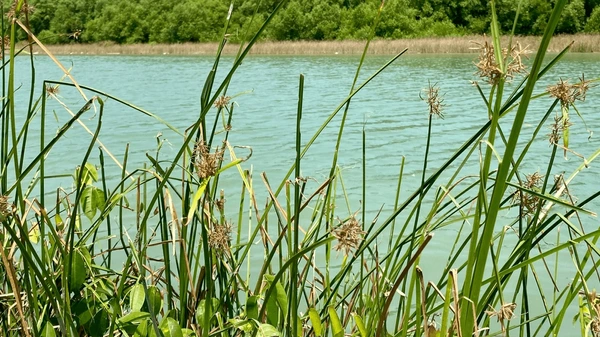The swampy area in the Southern US NYT clue has become a staple in crossword puzzles, challenging and intriguing solvers for years. These enigmatic wetlands, often referred to as bayous or marshes, hold a special place in both the natural landscape of the American South and the world of word games. Their unique ecosystems and cultural significance have made them a recurring theme in the New York Times crossword, captivating puzzle enthusiasts across the globe.
This article delves into the fascinating world of Southern US swamps and their role in NYT crosswords. It explores the definition and characteristics of these wetlands, examines their importance in puzzle-solving, and highlights their ecological value. By shedding light on these mysterious landscapes, readers will gain a deeper appreciation for the swampy areas that have become a beloved part of crossword culture and natural heritage.
What is a Swampy Area in the Southern US NYT?
Definition and characteristics
A swampy area in the Southern US, often referred to as a bayou or marsh in NYT crosswords, is a forested wetland characterized by water-saturated soil and slow-moving waters. These ecosystems form along large rivers or lakes and are critically dependent on rainwater and seasonal flooding to maintain natural water level fluctuations. Swamps are transition zones where both land and water play crucial roles in shaping the environment.
The water in swamps can be fresh, brackish, or saline, depending on their location. Freshwater swamps are typically found inland, while saltwater swamps form on tropical coastlines. These wetlands have saturated soils and are dominated by water-tolerant woody vegetation such as trees and shrubs.
Common types of swampy areas
- Bottomland hardwood swamps: These are minerotrophic forested wetlands dominated by a mixture of lowland hardwoods, such as silver maple, red maple, and various ash species.
- Cypress swamps: Common in the southeastern United States, these swamps are characterized by cypress and tupelo trees, often draped with Spanish moss.
- Mangrove swamps: Found along tropical coastlines, these saltwater swamps are dominated by mangrove trees with their distinctive root systems.
- Freshwater marshes: These open wetlands are dominated by herbaceous plants like sedges and cattails.
Geographical distribution
Swampy areas are prevalent throughout the Southern United States, with notable examples including:
- The Everglades in Florida: Often called the “River of Grass,” this vast freshwater swamp stretches 97 kilometers wide and 160 kilometers long.
- The Atchafalaya Swamp in Louisiana: Covering approximately 900,000 acres, it is considered one of the largest riverine swamps in the United States.
- The Okefenokee Swamp: Spanning 700 square miles on the Georgia-Florida border, it features diverse wetland habitats.
- The Great Dismal Swamp: Located in Virginia and North Carolina, it is one of the most northerly of the Southeast’s great bottomland swamps.
These swampy areas play crucial ecological roles, providing habitat for diverse wildlife, acting as natural flood management systems, and contributing to soil stability. Their unique characteristics and significance have made them popular references in NYT crossword puzzles, challenging and intriguing solvers with their distinctive features and regional importance.
The Significance of Swampy Areas in NYT Crosswords
Frequency of appearance
Swampy areas in the Southern US have become a recurring theme in New York Times crossword puzzles. These clues appear regularly, challenging and intriguing solvers with their unique blend of geography, ecology, and cultural significance. The frequency of these clues highlights the importance of wetlands in both the natural landscape and the world of word games.
Popular clues and answers
When confronted with a swamp-related clue, solvers often encounter a variety of answers that reflect the diverse nature of these ecosystems. Some common answers include:
- Bayou: A slow-moving waterway often associated with Louisiana
- Everglades: Florida’s famous “River of Grass”
- Okefenokee: A vast swamp straddling the Georgia-Florida border
- Marsh: A generic term for wetlands with soft-stemmed vegetation
- Bog: Acidic, peat-filled wetlands found in parts of the Southern US
Other related terms that might appear in crosswords include slough, fen, glade, and mire. These words expand the solver’s wetland lexicon and prepare them for a wide range of swamp-related clues.
Tips for solving swamp-related clues
To excel at swamp-related crossword clues, solvers should:
- Familiarize themselves with the geography of the Southern US, particularly areas known for wetlands
- Understand the ecological importance of swamps and their role in local ecosystems
- Be aware of the cultural significance of swampy areas in literature, music, and history
- Stay informed about environmental issues affecting these wetlands, as conservation efforts may be referenced in clues
- Build a broad vocabulary of wetland-related terms to tackle various clue formulations
By approaching swamp-related clues from multiple angles – geographical, ecological, and cultural – solvers can improve their chances of finding the correct answer and gain a deeper appreciation for these unique ecosystems.
Ecological Importance of Southern US Swamps
Biodiversity hotspots
Southern US swamps serve as crucial biodiversity hotspots, supporting a wide variety of plant and animal species. These wetlands provide habitat for over 50 species of reptiles and amphibians, showcasing remarkable diversity across different wetland types. The southeastern Coastal Plain boasts an incredible array of wetland ecosystems, including some of the largest in the eastern United States. Notable examples include the Altamaha River floodplain and the Okefenokee Swamp, both recognized for their exceptional biodiversity and conservation value.
The region’s forests, which often encompass these wetlands, host approximately 595 bird species, 246 mammal species, 197 reptile species, and 170 amphibian species. Many of these animals are forest-dependent or forest-adapted, relying on the unique conditions provided by swampy areas. The South is also a center of species endemism, with numerous unique species found nowhere else in the world.
Water filtration and flood control
Swampy areas in the Southern US play a vital role in water filtration and flood control. These wetlands act as natural water purifiers, filtering sediment and absorbing pollutants from runoff. By trapping and filtering impurities, they maintain the health of rivers, bays, and beaches. This natural filtration process has significant benefits for water quality and the overall health of aquatic ecosystems.
In addition to water purification, wetlands serve as natural sponges, absorbing and temporarily storing floodwaters. During heavy rainfall or snowmelt events, these areas can reduce the severity of downstream flooding and erosion by holding back flood waters and slowing the rate at which water enters streams and rivers. This flood control function has proven particularly valuable in urban areas, where impervious surfaces increase the risk of flooding. Studies have shown that wetlands can lower overall flood heights, protecting communities, infrastructure, and agriculture from devastating flood damage.
Carbon sequestration
Southern US swamps have a significant impact on carbon sequestration, playing a crucial role in mitigating climate change. These coastal vegetated ecosystems, known as blue carbon ecosystems, have the capacity to sequester and store large amounts of organic carbon. Salt marshes, for example, can store an average of 42.43 Mg OC·ha−1, with the majority stored belowground.
The carbon storage potential of these wetlands is particularly impressive when compared to other ecosystems. Acre for acre, southern pocosin peatlands can store significantly more carbon than forests or grasslands. When left undisturbed, the stored carbon can remain locked in the organic soil for millennia, thanks to natural antimicrobial compounds that slow decay.
However, human activities such as drainage for agriculture have undermined this storage capability, turning many sites from carbon sinks into carbon sources. Restoration efforts, such as rewetting drained peatlands, can help reverse this trend and prevent the release of millions of tons of carbon dioxide into the atmosphere annually.
Conclusion
The exploration of swampy area in the southern US nyt reveals their significant role in both nature and popular culture. These wetlands are more than just crossword puzzle answers; they’re vital ecosystems that support rich biodiversity, help to control floods, and play a key part in carbon sequestration. Their frequent appearance in NYT crosswords highlights their cultural importance and encourages solvers to learn more about these unique environments.
Understanding these swamps has value beyond solving puzzles. It sheds light on the need to protect these areas, which face threats from human activities and climate change. By appreciating the complexity and importance of Southern US swamps, we can better grasp their impact on our environment and culture. This knowledge not only helps with crosswords but also fosters a deeper connection to the natural world around us.
FAQ About “Swampy Area in the Southern US NYT”
What is a swampy area in the Southern US commonly referred to in NYT crosswords?
Answer: In NYT crosswords, a swampy area in the Southern US is often referred to as a “bayou” or “marsh.” These terms describe wetlands characterized by water-saturated soil and slow-moving waters.
Why are Southern US swamps significant in crossword puzzles?
Answer: Southern US swamps are significant in crossword puzzles due to their unique ecological features, cultural importance, and frequent appearance in the puzzles. Their diverse characteristics and regional significance make them intriguing and challenging for solvers.
What are some common types of swampy areas in the Southern US?
Answer: Common types of swampy areas include bottomland hardwood swamps, cypress swamps, mangrove swamps, and freshwater marshes. Each type has distinct vegetation and ecological characteristics.
How do Southern US swamps contribute to flood control?
Answer: Southern US swamps act as natural sponges, absorbing and temporarily storing floodwaters. This helps reduce the severity of downstream flooding, protecting communities and ecosystems.
What role do Southern US swamps play in carbon sequestration?
Answer: Southern US swamps play a critical role in carbon sequestration by storing large amounts of organic carbon in their soils. This helps mitigate climate change by preventing the release of carbon dioxide into the atmosphere.











